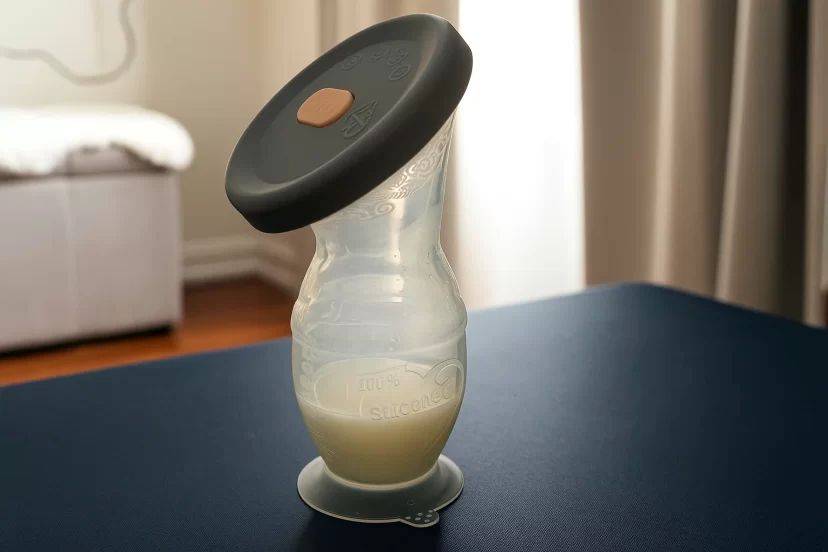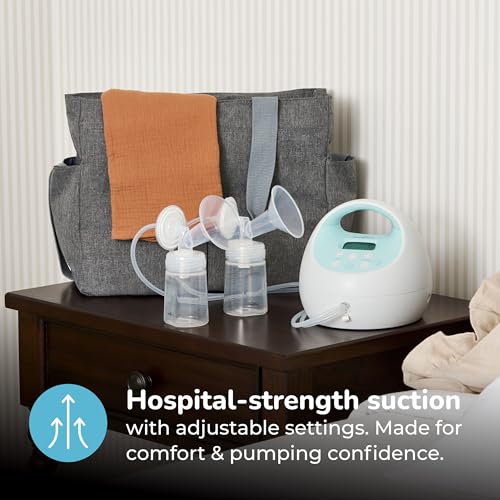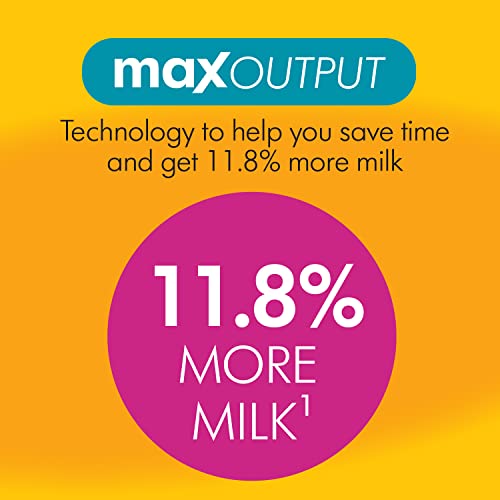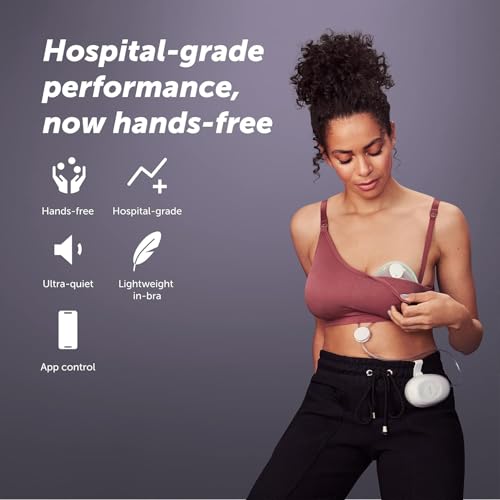Best Breast Pumps: Complete Guide for Every Mom
*We may earn a commission for purchases made using our links. Please see our disclosure to learn more.
The nursery was quiet at 3 AM, bathed in the soft glow of a nightlight. A mother sat in the rocking chair, the rhythmic hum of her breast pump filling the silence. Her eyes were heavy with exhaustion, but there was something else there too—a quiet determination. This wasn’t just about feeding her baby; it was about reclaiming a piece of herself while nurturing the life she’d brought into the world. The right breast pump had transformed those midnight sessions from frustrating struggles into moments of purpose and connection.
For countless mothers navigating the beautiful chaos of early parenthood, finding the best breast pump becomes more than just another item on a registry—it becomes a lifeline. Whether returning to work, managing milk supply, or simply seeking flexibility in feeding routines, the journey to discovering the perfect pumping solution is deeply personal and profoundly impactful.
“The measure of great parenting is not in the method of feeding but in the love, intention, and effort behind every choice made for the child’s wellbeing.”
— Lactation Consultant and Author
Key Takeaways
- Pump types matter: Electric pumps offer efficiency for frequent use, while manual pumps provide portability and quiet operation for occasional needs
- Comfort is crucial: Proper flange fit and adjustable suction settings can transform the pumping experience from uncomfortable to manageable
- Lifestyle alignment: The best breast pump matches your specific situation—whether that’s exclusive pumping, returning to work, or occasional bottle feeding
- Features vary widely: From hospital-grade suction to wearable designs, understanding your priorities helps narrow the overwhelming options
- Investment value: Quality pumps often pay for themselves through insurance coverage and long-term reliability across multiple children
Best Breast Pumps 2025
Spectra Baby S1 Plus Premier Rechargeable Breast Pump
The Spectra Baby S1 Plus Premier Rechargeable Breast Pump is one of the best breast pumps for moms seeking comfort, portability, and efficiency. Featuring Natural Nursing Technology, it mimics the natural breastfeeding experience for gentle yet effective pumping. Its rechargeable design and portable tote make it perfect for travel, while single or double pumping options provide flexibility. The complete accessory kit ensures you have everything you need to start your pumping journey immediately. Ideal for moms on-the-go who want convenience without compromising performance.
When searching for the best breast pumps, the Spectra Baby S1 Plus stands out for its combination of comfort, portability, and performance. Designed with Natural Nursing Technology, it closely replicates a baby’s natural feeding rhythm, making pumping painless and effective. Whether you are pumping at home or on the go, the rechargeable S1 Plus paired with its grey tote ensures you have everything you need at your fingertips. With options for single or double pumping and a complete set of accessories included, this breast pump is a reliable choice for any mom looking to simplify breastfeeding.
- Comfort: Natural Nursing Technology provides gentle suction that mimics breastfeeding.
- Portability: Rechargeable with a convenient grey tote for travel and storage.
- Versatility: Can be used as single or double electric pump with full accessory kit included.
- Price: Higher cost compared to basic breast pumps.
- Size: Slightly bulkier than some compact models for travel.
- Noise: Motor can be noticeable in quiet environments.
Medela Pump in Style with MaxFlow Technology
The Medela Pump in Style with MaxFlow Technology is one of the best breast pumps for moms who want efficiency, comfort, and portability. Featuring clinically proven MaxFlow Technology, it increases milk output by up to 11.8% in less time. Its quiet operation, lightweight design, and intuitive control panel make pumping at home or on-the-go simple. The personalizable oval-shaped breast shields and multiple pumping options provide comfort and flexibility, while a full range of accessories ensures you’re fully supported throughout your breastfeeding journey.
Looking for the best breast pumps? The Medela Pump in Style with MaxFlow Technology combines comfort, efficiency, and portability for busy moms. Its clinically proven MaxFlow system helps increase milk output faster, while the oval-shaped PersonalFit Flex breast shields ensure a gentle, natural pumping experience. With quiet operation, lightweight design, and both single- and double-pumping options, this pump is ideal for home or travel. Paired with a full range of accessories and US-based customer support, it’s a reliable choice for moms wanting a top-performing breast pump.
- Efficiency: MaxFlow Technology boosts milk volume up to 11.8% faster than standard pumps.
- Comfort: Oval-shaped PersonalFit Flex breast shields provide gentle, ergonomic suction.
- Portability: Lightweight (1.18 lbs. with battery pack) and quiet operation, perfect for travel.
- Accessories: Tote bag may vary; sometimes replaced with backpack depending on availability.
- Price: Higher cost compared to basic double electric pumps.
- Learning Curve: Requires some initial setup to use massage and letdown modes effectively.
Elvie Stride Hands-Free Electric Breast Pump
The Elvie Stride Plus is one of the best breast pumps for modern moms seeking convenience, comfort, and technology-driven efficiency. This hospital-grade wearable pump delivers suction up to -300 mmHg per cup and features both Stimulation and Expression modes with 10 intensity levels per mode. Weighing less than 5 ounces per cup, it’s ultra-lightweight, discreet, and fits comfortably inside your bra, allowing hands-free pumping anywhere. The pump connects to the Elvie app for remote control, suction adjustment, and tracking pumping history. Its 3-in-1 carry bag with a wet bag, cool bag, and ice pack makes it ideal for travel, while adjustable breast shield sizes ensure a perfect fit.
When looking for the best breast pumps, the Elvie Stride Plus stands out for its hands-free, wearable design and hospital-grade performance. Its ultra-quiet, lightweight cups make pumping comfortable and discreet under clothing, while the app-controlled features allow moms to adjust suction and track pumping sessions remotely. With both Stimulation and Expression modes and 10 intensity settings per mode, it delivers efficient milk expression every time. The 3-in-1 carry bag keeps milk cool and mess-free during travel. Designed for convenience, portability, and comfort, the Elvie Stride Plus is a top choice for moms who want flexibility without compromising performance.
- Hands-Free Convenience: Wearable and discreet design allows pumping without removing clothing.
- App-Controlled: Adjust suction levels, track pumping sessions, and monitor milk collection remotely.
- Hospital-Grade Performance: Powerful suction up to -300 mmHg with customizable Stimulation and Expression modes.
- Price: Higher cost compared to standard electric pumps.
- Capacity: Only compatible with standard 5-ounce bottles; may require multiple sessions for higher output.
- Fit Sensitivity: Proper breast shield size is essential for comfort and efficiency.
Haakaa Gen 2 Silicone Breast Pump
The Haakaa Gen 2 Silicone Breast Pump is one of the best breast pumps for moms seeking simplicity, portability, and hands-free convenience. Made from premium food-grade silicone, this award-winning manual pump offers excellent suction for milk collection and can also be used as a passive milk collector. Its compact, lightweight design makes it perfect for home, work, or travel, while the upgraded silicone cap and suction base ensure leak-proof storage. Quiet, durable, and easy to use, the Haakaa pump is highly recommended by nursing moms, lactation consultants, and parenting experts.
When searching for the best breast pumps, the Haakaa Gen 2 Silicone Breast Pump is a top choice for moms who value portability and ease of use. This manual, hands-free pump is made from food-grade silicone and allows for quiet, effective milk expression or passive collection during nursing. Its compact design fits into any bag for home, work, or travel, while the suction base and silicone cap prevent spills and protect your milk. Endorsed by moms, lactation consultants, and experts worldwide, the Haakaa pump combines simplicity, durability, and convenience, making it ideal for everyday use.
- Portability: Lightweight, compact, and easy to carry in any bag.
- Hands-Free Operation: Silent manual pumping or passive milk collection without batteries or cords.
- Durability: Made from premium food-grade silicone with a secure suction base and upgraded cap.
- Manual Operation: Requires physical effort; less convenient for double pumping sessions.
- Limited Capacity: 5oz / 150ml may require multiple collections for higher milk volumes.
- Single Use Fit: While one size fits most, may not suit all breast shapes perfectly.
The Emotional Journey Into Pumping
The decision to use a breast pump rarely comes from a single motivation. For some, it’s the anticipation of returning to work while maintaining breastfeeding goals. For others, it’s the need to share feeding responsibilities with a partner or address latch difficulties. Some mothers find themselves exclusively pumping due to medical circumstances, while others simply want the flexibility to leave the house without their baby attached.
Whatever the reason, that first pump session often arrives wrapped in uncertainty. The flanges feel foreign, the suction seems either too gentle or too aggressive, and the amount collected can spark either relief or worry. These early experiences shape the entire pumping journey, which is why finding the best breast pump for individual needs matters so profoundly.
The transformation from awkward beginner to confident pumper doesn’t happen overnight. It unfolds through trial and error, adjustments in technique, and often, a change in equipment. The stories shared in online forums and whispered between tired mothers in pediatrician waiting rooms all echo the same truth: the right pump makes all the difference.
Understanding Pump Types and Their Purposes
Electric Breast Pumps: Power and Efficiency
Electric breast pumps revolutionized the pumping experience, offering consistent suction without manual effort. These devices range from single pumps (one breast at a time) to double pumps (both breasts simultaneously), with the latter cutting pumping time in half—a critical factor for mothers juggling work deadlines or multiple children.
Hospital-grade electric pumps deliver the strongest suction, often available for rent but increasingly accessible for purchase. They’re designed for frequent, long-term use and excel at establishing or maintaining milk supply. The closed system design prevents milk from entering the tubing, maintaining hygiene and motor longevity.
Personal-use electric pumps offer impressive performance at a more accessible price point. Modern versions include features like adjustable suction strength, expression modes that mimic a baby’s nursing pattern, and rechargeable batteries for portability. The evolution from plugged-in necessity to wireless convenience has expanded where and when pumping can happen.
Manual Breast Pumps: Simplicity and Control
Manual pumps require hand operation but offer distinct advantages. They’re completely silent, making them ideal for pumping in shared spaces or while traveling. The direct control over suction speed and strength appeals to mothers who find electric pumps too intense or prefer a more natural rhythm.
These pumps shine in specific scenarios: collecting the letdown from one breast while nursing on the other, occasional pumping when regular nursing is the primary method, or as a backup when electricity isn’t available. Their compact size and lack of electrical components make them incredibly portable and low-maintenance.
The physical effort required makes manual pumps less practical for exclusive pumping or building a large freezer stash. However, for targeted use, they provide an affordable, reliable solution without the weight, noise, or power needs of electric alternatives.
Wearable Breast Pumps: Freedom and Flexibility
The newest category in pumping technology, wearable pumps fit inside a bra, allowing hands-free operation with complete mobility. This innovation addresses one of the biggest complaints about traditional pumping: being tethered to one spot for 15-30 minutes multiple times daily.
Wearable pumps enable multitasking that would be impossible with conventional equipment. Mothers report pumping while preparing meals, playing with toddlers, attending video conferences, or simply moving around their homes. The psychological impact of this freedom shouldn’t be underestimated—it transforms pumping from an isolating interruption to an integrated part of daily life.
The trade-offs include higher price points, smaller milk capacity requiring more frequent emptying, and sometimes less powerful suction compared to traditional electric pumps. For mothers prioritizing mobility and discretion, these compromises often feel worthwhile.
Common Challenges and Real Solutions
The Flange Fit Dilemma
Perhaps no single factor affects pumping comfort and output more than flange size. The circular breast shield that centers the nipple should create a seal without causing pain, rubbing, or cutting off circulation. Yet standard flanges don’t fit everyone, and many mothers pump with incorrect sizing for weeks or months, wondering why sessions feel uncomfortable or yield disappointing amounts.
Proper fit means the nipple moves freely in the tunnel without excessive areola being pulled in. Too small causes friction and compression; too large reduces suction effectiveness. Measuring nipple diameter and consulting size charts helps, but sometimes trial and error with different sizes reveals what works best.
Investing in properly sized flanges, silicone inserts for comfort, or angled flanges for better positioning can completely transform the pumping experience. What once felt like a dreaded chore becomes manageable, even comfortable.
Maintaining Supply While Pumping
The breast milk production principle is simple: supply meets demand. However, translating this to pumping requires understanding that pumps, even excellent ones, don’t typically remove milk as efficiently as a nursing baby. This can lead to gradual supply decreases if not managed proactively.
Strategies for maintaining supply include pumping on a consistent schedule that mimics baby’s feeding pattern, ensuring complete breast emptying during sessions, and adding power pumping sessions (rapid pump-rest cycles) to simulate cluster feeding. Staying hydrated, well-nourished, and adequately rested also supports production, though these feel challenging in the exhausting early months.
Some mothers find that hand expression after pumping removes additional milk the machine missed, signaling the body to maintain higher production. Others swear by specific pumps or brands that seem to work better with their individual anatomy. The journey to maintaining supply while pumping is highly personal, requiring patience and persistence.
Balancing Pumping with Life’s Demands
Exclusive pumping means spending 2-3 hours daily hooked to a machine—time that disappears from sleep, work productivity, household management, or simply being present with baby. Working mothers face the additional challenge of finding private spaces, managing pump breaks within work schedules, and storing milk safely.
Creating a dedicated pumping station at home with all necessary supplies reduces setup time. A cooler bag with ice packs handles milk storage during work hours. Hands-free pumping bras allow for phone use, reading, or laptop work during sessions. These practical solutions reclaim some of the time pumping consumes.
The mental load also matters. Tracking ounces, worrying about supply, sterilizing parts, and planning pumping around other activities creates cognitive burden. Finding rhythms that feel sustainable—whether that’s three pumps daily or eight, exclusively pumping or combo feeding—requires releasing idealized expectations and embracing what actually works.
The Emotional Weight of Output
The numbers on those bottles carry disproportionate emotional weight. A “good” pumping session brings relief and validation. A disappointing yield triggers anxiety and self-doubt. This numerical evaluation of motherhood can feel overwhelming, especially when comparing output to online groups where others seem to pump effortlessly.
Understanding that pumping output doesn’t necessarily reflect nursing supply helps. Babies extract milk more efficiently than machines. Stress, fatigue, and hormones affect letdown and production. Some bodies simply respond better to baby than pump, and that’s completely normal.
Celebrating small victories matters: the first full bottle, making it through a work week with enough milk, or finding a pump that finally feels comfortable. The pumping journey includes frustrations and setbacks, but also moments of profound satisfaction in providing nourishment through effort and dedication.
Features That Transform the Experience
Suction Strength and Customization
The best breast pumps offer adjustable suction levels because optimal strength varies between individuals and even between breasts on the same person. Starting with lower suction and gradually increasing prevents discomfort while finding the sweet spot where milk flows efficiently without pain.
Two-phase expression mimics how babies nurse: quick, light suction to stimulate letdown, followed by slower, deeper pulls to extract milk. This technology significantly improves output for many mothers compared to single-speed pumps. The difference in effectiveness can mean the difference between meeting feeding goals or supplementing with formula when that’s not the preference.
Hospital-grade pumps offer the strongest suction but require assessment of whether that power level is necessary. For mothers with abundant supply or good letdown response, mid-range pumps often suffice. Those struggling with supply, returning to work after extended maternity leave, or exclusively pumping typically benefit from professional-grade strength.
Portability and Power Options
The ability to pump anywhere extends beyond convenience—it’s often a necessity. Rechargeable battery pumps eliminate the search for outlets in airport lactation rooms, parked cars during road trips, or bedrooms without nearby plugs. The freedom to pump in comfortable locations rather than wherever electricity exists reduces stress and often improves output.
Compact designs that fit in standard bags make pumping less conspicuous for work or travel. However, smaller doesn’t always mean better—some ultra-portable pumps sacrifice power or capacity. Balancing size with functionality depends on individual priorities and pumping frequency.
Car adapters extend pumping possibilities for mothers with long commutes, though safe pumping while driving requires hands-free setups and careful attention to the road. Some mothers report their most productive pumping sessions happen during peaceful drives, perhaps due to reduced stress or the vibration motion stimulating letdown.
Noise Levels and Discretion
Early pump models sounded like small machinery, making discreet pumping impossible. Modern pumps, especially wearable versions, operate nearly silently—a game-changer for pumping at work, in shared spaces, or while others sleep. The psychological impact of noisy pumping shouldn’t be dismissed; feeling conspicuous adds stress to an already vulnerable activity.
However, some mothers find the rhythmic sound of traditional pumps soothing or associate it with productive sessions. Personal preference matters more than objective decibel measurements. Testing pumps before committing helps determine whether silence or a different sound quality matters for individual comfort.
Ease of Cleaning and Assembly
Pumping creates a daily mountain of parts to wash, dry, and reassemble. Pumps with fewer components, dishwasher-safe pieces, or closed systems requiring less frequent cleaning reduce this burden significantly. The 2 AM calculation of whether to wash pump parts or catch a few more minutes of sleep happens more often than expected.
Quick-connect systems that snap together intuitively save time and frustration, especially during sleep-deprived weeks. Universal compatibility with standard bottles eliminates the need to transfer milk, reducing dishes and contamination risk. These seemingly small features compound over hundreds of pumping sessions.
Some mothers keep multiple sets of parts to reduce washing frequency, a worthwhile investment for sanity preservation. Microwave sterilizer bags or electric sterilizers further streamline the cleaning process. Every minute saved in maintenance is a minute returned to rest, baby care, or personal well-being.
Making the Decision: Matching Pump to Lifestyle
For Working Mothers Returning to Offices
The best breast pump for working mothers typically combines power, efficiency, and portability. Double electric pumps with strong suction cut pumping time to 15-20 minutes, crucial when breaks are limited. Rechargeable batteries and compact carrying cases facilitate transport between home and workplace.
Consider workplace realities: Is there a dedicated lactation room or will pumping happen in various locations? How many breaks can realistically be taken? Does company culture support visible pumping bags? These factors influence whether a traditional pump, wearable pump, or combination serves best.
Many working mothers maintain two pumps: a powerful unit at work and a secondary pump at home or for backup. Insurance often covers one pump, making a second investment more manageable. The redundancy provides peace of mind against equipment failure derailing milk supply.
For Stay-at-Home Mothers Seeking Flexibility
Mothers primarily nursing but wanting occasional bottles for date nights, running errands, or sharing feeding with partners often thrive with manual pumps or single electric pumps. The frequency doesn’t justify the investment in high-end equipment, and simpler options suffice for building small freezer stashes.
Wearable pumps appeal to this group as well, enabling pumping during nap time activities or household tasks. The ability to pump while doing other things maximizes the limited windows available in toddler-filled households.
For mothers planning multiple children, investing in a quality pump that lasts years makes financial sense. Entry-level pumps may save money initially but require replacement, negating the savings. Evaluating pumps as long-term investments shifts the cost-benefit analysis.
For Exclusive Pumpers
Exclusive pumping demands the most from breast pump equipment. These mothers pump 8-10 times daily in early months, making durability, comfort, and efficiency paramount. Hospital-grade pumps often provide the power and longevity needed for this intensive use.
The emotional journey of exclusive pumping carries unique challenges: missing the closeness of nursing, the time commitment, and the constant awareness of ounces. The best breast pump for this situation is one that makes the experience as comfortable and efficient as possible, reclaiming whatever time and mental energy it can.
Many exclusive pumpers invest in multiple flanges sizes, hands-free bras, nipple cream, and backup parts. Creating an optimized setup reduces friction in an already demanding routine. Connecting with other exclusive pumpers provides community and validation for this less-visible form of breastfeeding.
For Mothers Managing Medical Situations
Premature babies, latch difficulties, tongue ties, cleft palates, or other medical challenges sometimes necessitate pumping as the primary feeding method until issues resolve. These situations benefit from hospital-grade pumps often available through NICU programs or insurance coverage.
The stress of medical challenges compounds the already steep learning curve of pumping. Lactation consultants, NICU nurses, and support groups specializing in these situations provide crucial guidance. The best breast pump in these circumstances is often the one recommended by medical providers familiar with the specific situation.
Some hospitals loan pumps during NICU stays or initial recovery periods. Taking advantage of these resources while researching long-term options reduces financial pressure during already stressful times. Insurance coverage often expands for medical necessity, making higher-end pumps accessible.
The Broader Impact on Daily Life
Reclaiming Time and Independence
Breast pumps paradoxically both consume and create time. Sessions require 15-30 minutes, multiple times daily. Yet they also enable mothers to leave home without baby, partners to share feeding responsibilities, and schedules to accommodate work or other children.
The mental calculation of when the next pump session is needed creates invisible management burden. Setting alarms, planning activities around pumping, and constantly tracking time since last pump add cognitive load. Finding pumps that integrate smoothly into life rather than dominating it makes a substantial difference in overall well-being.
For some mothers, pumping sessions become unexpected moments of forced rest—a chance to sit down, perhaps read or scroll social media, in a season where stillness otherwise doesn’t exist. Reframing these sessions from interruption to break shifts the emotional experience significantly.
Impact on Relationships and Mental Health
The ability to share feeding through pumped milk can strengthen partner relationships and paternal bonding. It also distributes the nighttime burden, potentially improving maternal sleep and mental health. However, pumping also introduces new sources of tension: the work of pumping itself, anxiety about supply, or conflicting opinions about necessity.
Some mothers report feeling like “dairy cows,” with the mechanical nature of pumping feeling dehumanizing. Others find comfort in the concrete proof of nourishment they’re providing. These emotional responses are valid and normal, reflecting the complex reality of modern motherhood.
Access to mental health support matters greatly. Postpartum depression and anxiety can be exacerbated by pumping pressures and isolation. Knowing when to ease pumping goals for mental health preservation demonstrates strength, not weakness. Fed babies and healthy mothers matter more than any specific feeding method.
Building Community and Finding Support
Online communities of pumping mothers provide solidarity, troubleshooting advice, and celebration of milestones. Seeing others navigate similar challenges reduces isolation and normalizes the struggles. However, comparison can also breed inadequacy when scrolling through freezer stash photos or reading about effortless pumping experiences.
Local support groups, lactation consultants, and workplace lactation coordinators offer personalized guidance. Many mothers report that finding just one knowledgeable person who helped them troubleshoot pump settings or flange fit transformed their entire experience.
Sharing both successes and struggles creates more authentic community. The perfect pumping journey doesn’t exist—everyone faces challenges, doubts, and moments of wanting to quit. Normalizing these realities helps current and future pumping mothers approach the journey with realistic expectations.
Practical Wisdom for Every Stage
Starting Strong: The Early Days
The first weeks of pumping require grace and patience. Supply is establishing, bodies are healing, and everyone is sleep-deprived. Starting too aggressively with high suction or frequent sessions can cause damage; starting too tentatively might miss the optimal window for supply establishment.
Following the newborn’s natural feeding frequency—every 2-3 hours—helps establish robust supply. Pumping for 15-20 minutes per session, even if milk isn’t flowing the entire time, signals the body to maintain production. Massaging breasts before and during pumping can improve output.
Hand expression technique learned from lactation consultants often extracts more milk than pumping alone in early days. Combining methods maximizes results during this crucial supply-building phase.
Middle Journey: Finding Your Rhythm
After the initial weeks, patterns emerge. Bodies learn to let down for the pump, optimal suction settings become clear, and a realistic schedule develops. This is when the best breast pump choice reveals itself—when the honeymoon phase ends and practical realities dominate.
Efficiency becomes crucial as life resumes beyond the newborn bubble. Strategies like prepping pump parts the night before, keeping cleaning supplies easily accessible, and establishing a pumping uniform (easy-access clothing) streamline the process.
This stage also brings challenges like decreased output from stress, cycle return affecting supply, or growth spurts requiring increased pumping. Flexibility and problem-solving matter more than perfection.
Long-Term Pumping: Sustaining and Weaning
Mothers who pump for extended periods—six months, a year, or beyond—face unique considerations. Equipment wear and tear may require replacement parts or new pumps. Motivation can wane as the newness fades and the work remains constant.
Celebrating milestones helps: three months, six months, returning to work successfully, or hitting personal goals. These markers provide motivation during difficult stretches. Conversely, knowing when enough is enough requires self-compassion and permission to stop when pumping no longer serves mother or baby.
Weaning from pumping involves gradually reducing sessions to avoid engorgement and maintain comfort. Some mothers drop one session weekly; others cut minutes from each session. The process takes weeks, but rushing can cause painful complications.
Addressing Doubts and Building Confidence
When Supply Seems Low
The most common pumping anxiety centers on supply adequacy. However, pumping output doesn’t always reflect actual production. Babies extract milk more efficiently, and stress during pumping can inhibit letdown. Measuring success by baby’s growth, diaper output, and contentment often provides more accurate assessment than ounces in bottles.
That said, genuine low supply sometimes occurs. Addressing potential causes—infrequent pumping, hormonal issues, insufficient caloric intake, or anatomical factors—with medical professionals can help. Sometimes the solution is more pumping; sometimes it’s supplementation; sometimes it’s peace with combo feeding.
Supplements, teas, and foods marketed for supply boosting have mixed evidence but low risk. Many mothers report positive results from oats, flaxseed, brewer’s yeast, or pharmaceutical options like domperidone. Consulting healthcare providers before starting any supplements ensures safety.
Moving Beyond Comparison
Social media presents curated highlights: abundant freezer stashes, easy pumping sessions, or babies who drink exclusively pumped milk without issue. These snapshots don’t show the struggles, the supplementation, or the different circumstances that make some journeys appear easier.
Every body responds differently to pumping. Some effortlessly produce oversupply; others work incredibly hard for every ounce. Neither reflects maternal worth or dedication. Focusing on individual goals rather than others’ results protects mental health and sustainable practice.
Creating personal metrics for success—whatever those may be—builds confidence independent of external comparison. For some, success is exclusive breastmilk feeding; for others, it’s any amount of breastmilk supplementing formula. Both are worthy accomplishments.
Looking Forward: Your Pumping Journey
The path ahead with pumping holds possibilities that extend beyond bottles of milk. It’s an opportunity to learn about your body, develop resilience, and create feeding flexibility that serves your family’s unique needs. The best breast pump for this journey is the one that supports these goals while fitting realistically into life.
Whether pumping becomes a central part of feeding or an occasional tool, whether it lasts weeks or years, the experience shapes motherhood in unexpected ways. The late-night sessions, the troubleshooting, the small victories, and the hard-won ounces all contribute to the larger story of nourishing a child.
Permission to adjust expectations, change strategies, or stop altogether matters as much as commitment to trying. The pumping journey is personal, and only the mother living it can determine what success looks like. Trust in that individual wisdom, seek support when needed, and celebrate every milestone along the way.
The journey to finding the best breast pump intertwines with the broader journey of early parenthood—messy, beautiful, exhausting, and profoundly meaningful. Each pumping session represents dedication to nourishment, even when it’s challenging. That dedication deserves recognition and celebration, regardless of the specific path it takes.
Frequently Asked Questions
How long should each pumping session last?
Most pumping sessions should last 15-20 minutes for double electric pumps or 20-30 minutes for single pumps. Continue pumping for 2-5 minutes after milk stops flowing to fully empty the breast and signal continued milk production. If time is limited, shorter sessions are better than skipping entirely, though they may yield less milk.
How often should I pump to maintain milk supply?
For exclusive pumping, aim for 8-10 sessions in 24 hours during the first three months, then gradually reduce to 6-8 sessions as supply stabilizes. Working mothers typically pump every 3-4 hours during work hours and nurse when with baby. At minimum, pumping should occur every 4-5 hours during the day and once overnight to maintain supply, though individual needs vary.
Can I use a breast pump that someone else used?
Only hospital-grade pumps with closed systems designed for multiple users are safe to share between mothers. Personal-use pumps are single-user devices—even with new tubing and flanges, milk particles and bacteria can enter the motor, creating contamination risk. Insurance often covers new pumps, making purchasing safer and more affordable than many realize.
Why am I pumping less than my baby drinks?
Pumps rarely extract as efficiently as babies nurse. Stress, fatigue, and the mechanical nature of pumping can inhibit letdown. To increase output, ensure proper flange fit, try pumping after nursing when more relaxed, use breast massage during sessions, and consider power pumping intervals. Some mothers simply respond better to baby than pump while maintaining adequate supply.
When should I replace my breast pump or its parts?
Valves and membranes typically need replacement every 4-8 weeks of daily use, as wear reduces suction effectiveness. Tubing should be replaced if moisture enters or every few months. Flanges last longer but may need sizing adjustments. If pumping becomes less effective, uncomfortable, or louder, replacing parts often solves the issue. The pump motor typically lasts the manufacturer’s intended duration—one year for most personal pumps, longer for hospital-grade models.
















